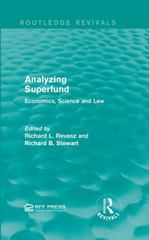Hey, tutor It's a macroeconomic question t
A perfectly competitive firm has a Cobb-Douglas production function f (X1, X2) = X1X2. Suppose that input prices are w1 = 1 and W2 = 1. The firm wants to find the cheapest way of producing y = 32. a. Suppose that in the short run the quantity of input factor 2 is fixed at X2 = 8. Solve the firm's short-run cost minimization problem to derive the optimal input quantity x1. b. Derive the corresponding costs Cs of producing y = 32 in the short run. c. Now consider the long run, in which both input factors are variable. Set up the Lagrangian function for this firm's long-run cost minimization problem. d. Derive the first-order conditions of the above long-run cost minimization problem. e. Solve the above first-order conditions to derive the optimal input quantities x1 and X2. f. Derive the corresponding costs c* of producing y = 32 in the long run.2. Consider the set of lotteries (Pr: Py; p=) on the set of outcomes {r, y, z} where Pr, Py; and p, are the probabilities of r, y, and z, respectively. (a) For each (partial) preference below, determine whether it is consistent with ex- pected utility maximization. (If yes, find a utility function; if so, show that it cannot come from an expected utility maximizer.) 1. (0, 1, 0) > (1/8, 6/8, 1/8) and (7/8, 0, 1/8) > (6/8, 1/8, 1/8) 2. (1/4, 1/4, 1/2) > (3/4, 0, 1/4) > (5/6, 1/6, 0) > (1/2, 1/3, 1/6) (b) For each family of indifference curves below, determine whether it is consistent with expected utility maximization. (If yes, find a utility function; if so, show that it cannot come from an expected utility maximizer.) 1. py = c - 2pr (where c varies) 2. Py = c(pr + 1) (where c varies) 3. Py = c - 2vp, (where c varies) (c) Find a complete and transitive preference relation on the above lotteries that sat- isfies the independence axiom but cannot have an expected utility representation. 3. Under the assumptions P1-P5, prove or disprove the following statements. (a) If All Bi, Azz B2, and Aj n A, = 0, then Aj U Azz B, U B2. (b) For any given event D, define "_ given D" by A> B given Diff An DEBAD. The relation > given D is a qualitative probability. (c) For any two partitions (A1. . .., A,) and (B1, .... B.) of S with A ... ~ An and B1~ . .. ~ Bn, we must have A| ~ B1.1. (For Grade) There are finitely many states s 0. Derive the demand of the decision maker for these securities as a function of the price vector p = (Ps) SES . 2. Ann is an expected utility maximizer, but she does not know her preferences, which she can learn by costly contemplation. To model this situation, take S = [0, 1], and let Z C R be a finite set of consequences with at leat two elements. Assume that Ann's von Neumann utility function is ZZA z = (2)n and her belief on S is represented by uniform distribution. For any n and some fixed c > 0, by spending en utils, Ann can obtain a partition Pn = {[0, 1/2"], (1/2", 2/2") , .... (k/2" , (k + 1) /2") ,..., [(2" - 1) /2", 1]} and observe the cell In (s) , g if Ann may end up choosing f when the true state happens to be s. Check which of the postulates P1-P5 of Savage is satisfied by _, for any fixed s. 3. Under the assumptions P1-P5, prove or disprove the following statements. (a) For any partition A1, ..., An of S, and for any acts f, ge F, If > g given Ax for all Ax] = f _ g. (b) If All Bi, Azz B2, and Aj n Az = 0, then A, U A,_ B, UBz. (c) For any given event D, define "_ given D" by A> B given D iff An DEBn D. The relation > given D is a qualitative probability









